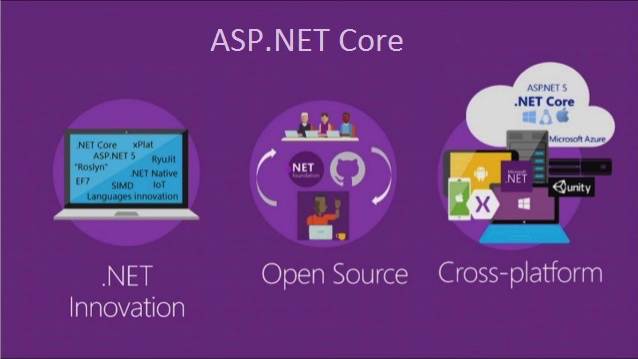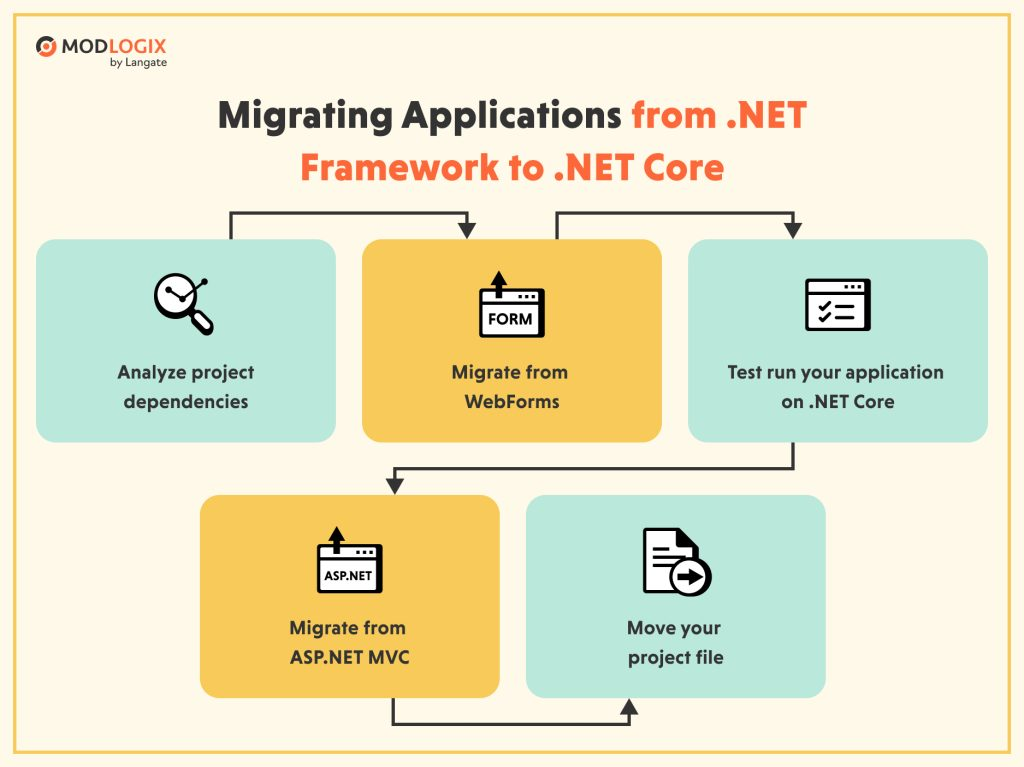A Comprehensive Guide To Migrating from .NET Framework to .NET Core
In this comprehensive guide, we will cover what .NET Core is, the key reasons to migrate, the main steps involved in migration, and resources that can help.
Join the DZone community and get the full member experience.
Join For Free.NET Core is Microsoft's latest open-source, cross-platform implementation of .NET. It shares many similarities with .NET Framework, but there are also key differences that developers need to understand when migrating their applications.
In this comprehensive guide, we will cover what .NET Core is, the key reasons to migrate, the main steps involved in migration, and resources that can help. Whether you are maintaining a legacy .NET Framework application or building new cloud-based microservices, read on to determine if .NET Core is the right path forward for your needs.
What Is .NET Core?
.NET Core is a rebranded and open-source variant of .NET Framework. Key goals for .NET Core included enabling cross-platform support beyond just Windows and building a modular framework optimized for the cloud and microservices.

Some major differences from .NET Framework include:
- Cross-platform support for Linux and macOS
- Open-source on GitHub with a community-focused model
- Modular architecture with no monolithic base class libraries
- Side-by-side versioning to enable apps to choose runtime versions
- Improved application deployment with reduced system dependencies
These advantages make .NET Core appealing for cloud-based and containerized workloads. The platform and tooling continue to evolve with frequent updates from Microsoft and community contributors.
Why Migrate to .NET Core?
There are a few key motivators to convert .NET Framework to .NET Core now:
- Cross-platform support: With .NET Core, you can host apps on Windows, macOS, and Linux. This provides additional flexibility for deployment to non-Windows environments.
- Improved performance: .NET Core has been rearchitected to optimize throughput and efficiency, especially for cloud server workloads. Benchmarks show significant improvements over the .NET Framework.
- Lower resource usage: A smaller app footprint provides better density for cloud services. .NET Core does away with many legacy dependencies that inflated .NET Framework app sizes.
- Open source and community-focused: With .NET Core being open source, developers can easily debug issues by stepping into framework code on GitHub. The platform also benefits from community patching and enhancements outside Microsoft.
- Side-by-side versioning: Apps can specify target .NET Core versions rather than being bound to machine-wide .NET Framework versions. This enables simpler upgrades and decoupling.
- Containerization: .NET Core is optimized for Docker containers and microservices with reduced dependencies and artifact publishing. This supports DevOps workflows.
- Cloud and microservices: In addition to containers, .NET Core integrates well with orchestrators like Kubernetes and serverless platforms like AWS Lambda. The modular architecture lends itself well to microservices.

These capabilities, including cross-platform support, performance, and efficiency, make .NET Core an appealing modern platform for new application development and migrating existing apps. Its open-source nature also allows for community contributions over time. Therefore, this technology will be relevant for a long time, which makes .NET Framework to .NET Core migration services quite an attractive option.
How To Migrate .NET Framework App to .NET Core
Migrating apps from .NET Framework over to .NET Core can involve several key steps:
1. Analyze Compatibility
Review all dependencies and APIs used in your .NET Framework app and plugins to determine if they are supported in .NET Core. Check databases, libraries, frameworks, and any other external integrations.
2. Change Target to .NET Core
In Visual Studio, you can retarget an existing .NET Framework app to .NET Core via the project settings. This will automatically handle many code migrations.
3. Update NuGet Packages
With the new target framework change, restore NuGet packages to pull down .NET Core-specific dependency versions. Resolve any conflicts or breaking changes during the build.
4. Modify Incompatible APIs
Based on the analysis done initially, update areas in code that referenced unsupported APIs from the .NET Framework. Leverage the .NET Portability Analyzer to find these issues.
5. Test and Debug
Run all unit tests to validate core functionality. Test locally across Windows, Linux and macOS to validate cross-platform support. Hook up the debugger as needed to step through issues.
6. Deploy and Monitor
With testing passed, deploy your converted application to new infrastructure leveraging Docker, Kubernetes or cloud services. Monitor performance and logs for any new errors that manifest at scale.

Resources for Migrating .NET Framework to .NET Core
Here are some additional resources that can help with your migration efforts:
- .NET portability analyzer: Scan assemblies and generate reports about .NET Core compatibility issues.
- .NET API analyzer: Find the usage of deprecated .NET Framework APIs that are not available in .NET Core.
- Visual Studio retargeting: Use Visual Studio's automated tooling to convert project files over to .NET Core.
- .NET framework migration guide: Microsoft's technical guide and API mapping for transitioning to .NET Core.
- Dockerizing .NET Core apps: Hands-on guide for containerizing apps for simplified deployment.
- Microservices with .NET core: Patterns and best practices for decomposing monoliths into distributed services.
Conclusion
Migrating from .NET Framework to cross-platform .NET Core takes careful planning but can unlock performance efficiencies and flexibility for modern application architectures. The core of the process is analyzing compatibility, converting project files, updating NuGet packages, and modifying code relying on obsolete .NET Framework APIs. With some upfront investment, embracing .NET Core can keep your apps relevant and poised to leverage cloud and container innovations going forward.
Opinions expressed by DZone contributors are their own.

Comments